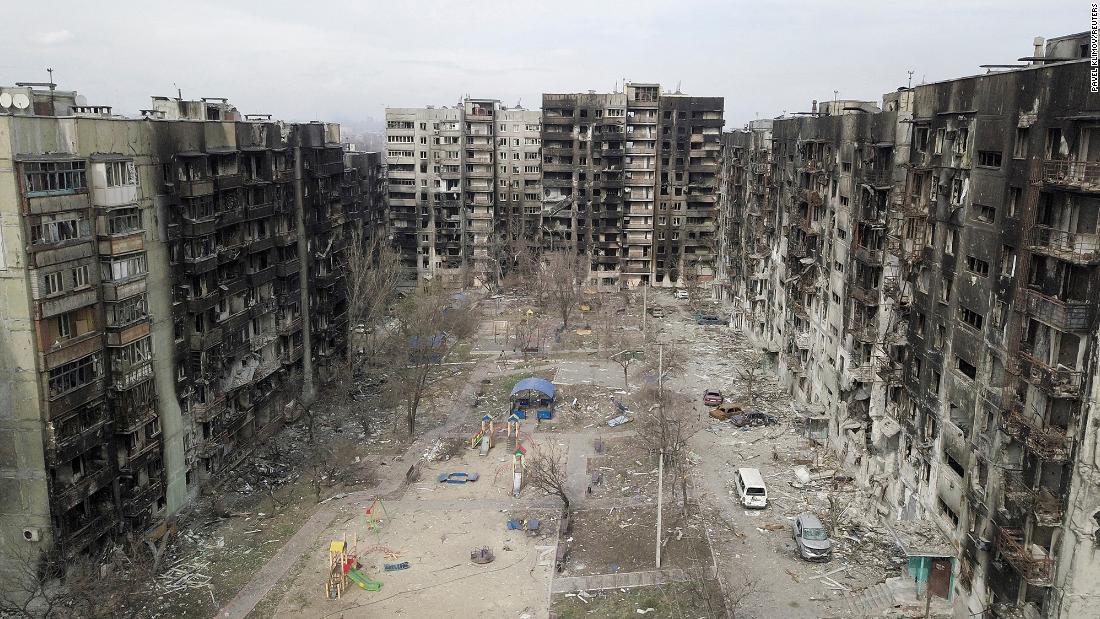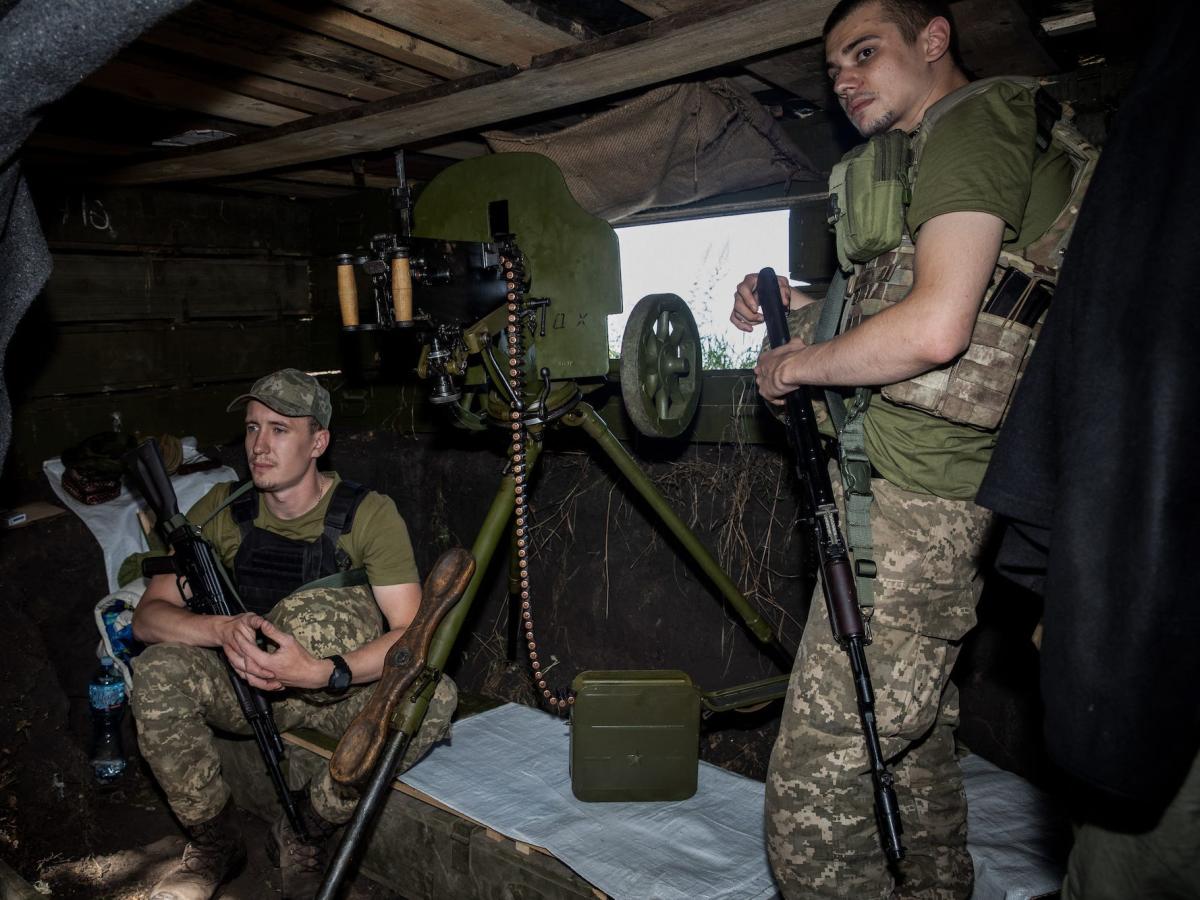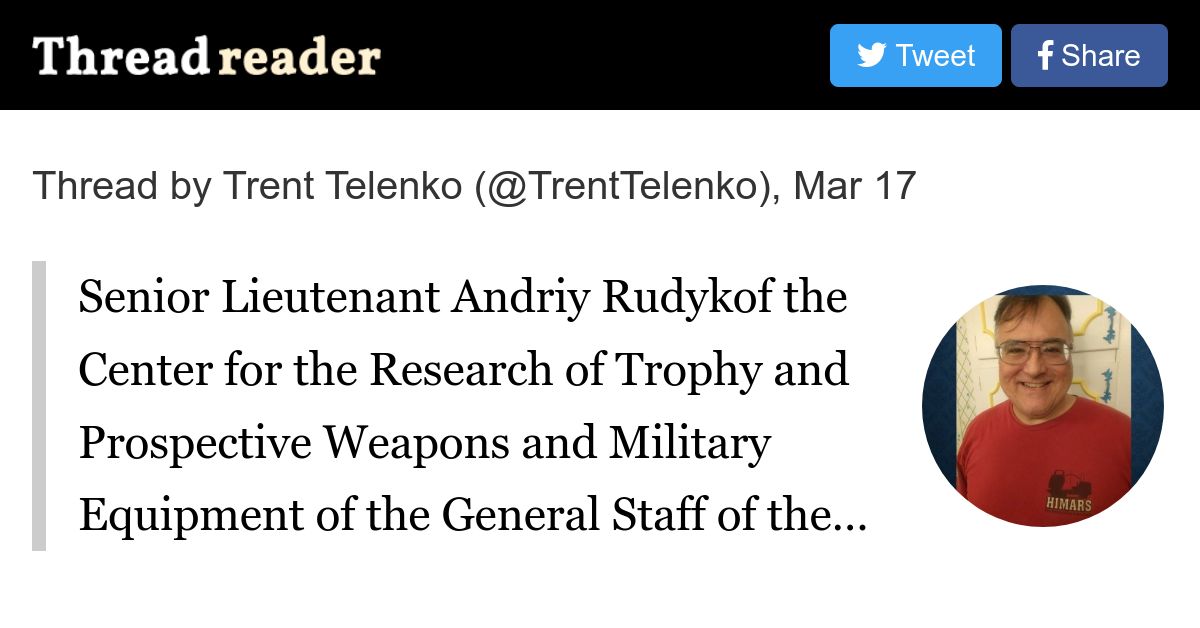Yep, Ukraine has been quite savvy about misdirection so far and applying pressure on such a long front that weaknesses are exposed. I just want to know which oligarch had the contract to build those concrete anti tanky pyramids. I bet he's rolling in a new set of wheels or a new jet. Miles and miles of those. Be so easy to cheat at them too...add a bit more sand, etc. Just cut the aggregate amount down a bit. Make the sides 1 cm smaller than spec, reduce volume by a huge amount, etc. Funny just guessing how they cheated.
Those dragon's teeth are not being installed correctly either. To be effective, they need to be partially buried in the ground. If they aren't buried, a tank, especially one with a dozer blade attached can simply push them out of the way. The Russians are just dumping them on the ground and making no attempt to bury them.
It's easy to find a chirping lunatic fringe but tough to make any sense of what they say. Apparently he is a regular on Tucker Carlson's show.
It is a spin on a real story.
Ahead of Xi-Putin meeting in Moscow, White House rejects cease-fire in Ukraine
Any attempt to broker any kind of cease fire without talking to both sides is supporting Russia's claim that Ukraine isn't really a nation. Places that aren't really a legal entity have somebody else negotiate on their behalf, they don't get a seat at the table.
Russia's claim to Ukraine is similar to China's claim to Taiwan. Both claim the other country is a breakaway region of their own country and therefore any conflict is an internal struggle. There is only one legitimate government in this struggle and the poser government of the rebels trying to break away from their rightful ruler.
China only approaching Moscow is telling the world that they think Moscow is being a little hard on their rebel subjects and maybe they should back off a bit. or at least for a little while.
The position of the United States and most countries outside Moscow's sphere of influence is that Ukraine is a sovereign state that was invaded in a war of conquest by their neighbor. As a sovereign state, Ukraine has the right for self determination and any negotiations involving Ukraine should have Ukraine as a primary contributor. Other nations may sit in as voices willing to support Ukraine, but any decisions about Ukraine's territorial integrity needs to be made by Ukraine.
Since 1945 wars of conquest have become extremely rare. China took Tibet in the late 40s and North Korea tried to take South Korea in the early 50s, but most wars of conquest have been border spats that remain frozen conflicts such as the dispute between India and Pakistan over ownership of the Cashmere Valley, the territorial dispute between Azerbaijan and Armenia, or other similar disputes. Both sides claim the territory, but while there is occasionally some shots fired, the two sides mostly just stare at one another.
There have been a few conflicts where one side tried a limited territorial grab such as the Falklands War in the 1980s. There Argentina was trying to annex a minor outlying territory of the UK. their ambitions were very limited. Putin's venture into Georgia and the first invasion of Ukraine in 2014 were also limited territorial grabs. Israel's territorial grabs are similarly taking small chunks out of other countries.
This conflict is the first I can think of since the Korean War where one country has tried to eliminate one of its neighbors from existence. Vietnam maybe, though the division of North and South Vietnam was a division within an ongoing civil war and the north won the civil war.
Such wars were common before WW II, and WW II was primarily about territorial conquest.
Countries have invaded other countries for other reasons than conquest. The US invaded Iraq for regime change, and a coalition of European countries toppled Quadafi in Libya. In those cases the invaders had no intention of incorporating that country into their country.
Russia's invasion of Ukraine has distinctions that some people don't see, but to leaders in the west who have lived their whole lives under the world order created after WW II in which nations' borders are now sacrosanct and wars of conquest are out of order, this war is an unprecedented attack on the world order.
If Russia is allowed to get away with its claims on Ukraine, it could potentially destabilize Europe. What if Germany asserted claims on the territory it lost after WW II? What if Austria claimed the territory it lost after WW I? What if Spain claimed the territory it lost in the 80 years war?
Europe has been at peace for nearly 80 years because everyone has agreed on where the borders are and have agreed to keep them there. That is the only time since humans first came to Europe during the last ice age that the borders have been that stable. To have a war of conquest on European territory is a major violation of the order that has become the norm for modern Europeans.
Maxim machine gun being used by Ukraine
The brutal fighting in Ukraine, filled with trenches and heavy casualties, has frequently been compared to WWI.

news.yahoo.com
There are probably a lot of those machine guns around that region. It was the most common domestically produced heavy machine gun of the USSR in WW II. The Russians got a lot of lend lease Browning machine guns from the US, but that machine gun on wheels was a common sight on the Eastern Front in WW II.
The Soviets stopped production of them in 1945, but they ended up in the Korean and Vietnamese conflicts. Apparently 35,000 were stored in Ukraine when the USSR fell and the Ukrainians have put the ones that could be made operational into service:
PM M1910 - Wikipedia
I have seen evidence the Russian troops are using them too. It's ancient hardware, but it does the job.

 www.cnn.com
www.cnn.com





/cloudfront-us-east-2.images.arcpublishing.com/reuters/NWO3XFTUGZL2NJSTUIFMVUOZJI.jpg)
